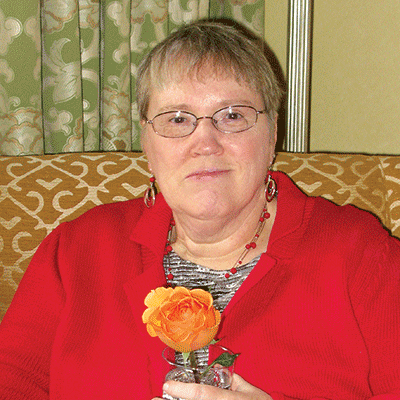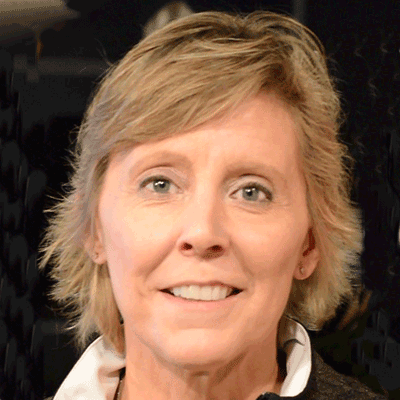An Interview with the developers, Karen Schoeneman and Carmen Bowman
Karen, can you tell us how the Artifacts of Culture Change came to be?

Karen Schoeneman
Karen: As a founder of the culture change movement and Pioneer Network, I developed a keen interest in the many wonderful changes nursing homes were making to their homes. I was working then at the Centers for Medicare and Medicaid Services (CMS) in the Division of Nursing Homes, as the lead in Quality of Life and co-lead for the survey process and surveyor training. This was after 17 years working in social services for long-term care providers that were cold institutional settings, nothing like home.
The pioneering nursing home providers were turning their enthusiasm for the principles of culture change into real and concrete changes that were designed to get rid of institutional practices and turn their places into something as close as possible to home.
I began attending Pioneer Network conferences when they began in 1999, and I would sometimes couple my attendance with a visit to an innovative culture changing provider nearby. Often Carmen Bowman partnered with me, in attending and sometimes doing presentations at conferences, as well as renting a car to visit culture changing nursing homes to see what they were doing. It occurred to both of us that there was no guidance available for what specific changes would be good for nursing homes and other long-term care providers to make. Therefore, I developed a CMS contract for Carmen to work with me to turn information we had collected into a questionnaire tool that homes could use to see the variety of things that were successfully getting changed, so they would be able to review their own practices and choose practices to change. This was the original Artifacts of Culture Change, released by CMS in 2006.
Carmen, what did working on the Artifacts tool mean to you?

Carmen Bowman
Carmen: Getting to work as a subcontractor to the CMS Division of Nursing Homes and with Karen Schoeneman, former Deputy Director there, has been a highlight of my life. In fact, after I gave birth to our only child, Ellie, in March of 2005, I would work on the draft when up in the middle of the night with her, and then CMS released the original Artifacts tool in April of 2006 which felt much like another birth of a sort.
Getting to debut the Artifacts of Culture Change at an invitation-only event at CMS in Baltimore was a pivotal moment in the culture change movement. Not only did we hope Artifacts would provide measurement, which is always desired in this field, we also hoped it would provide education which it did. We still hear that it does to this day, and we are glad.
Creating this tool, having the opportunity to expand and revise it as well as design the first-ever tool for assisted living, has been truly a labor of love.
How about you, Karen?
Karen: The development of this major 2.0 expansion of the Artifacts tool, plus developing a special version for assisted living, has been a dream come true for me. It encompasses many more things that innovators have successfully changed over the years since the original was released, and it forms an up-to-date tool for these settings to use to make splendid changes to create home after COVID has highlighted how important quality of life is to residents and families.
Carmen, How is the 2.0 version different from the original tool?
Carmen: The 2.0 version is not really an update, it is an expanded version adding the many culture change practices that were not in the first version. The original tool included 69 culture change practices (plus 10 outcome items). Artifacts (ACC) 2.0 includes 134 practices and ACC-AL includes 132 practices. (no outcome section this time). A new feature leaves the arbitrary point structure in favor of simply indicating for each practice whether it is fully, partially or not implemented. We hope this will create ease of completion giving way for more precious time to decide and plan practices the community desires to work on implementing.
Karen, What do you and Carmen hope nursing homes and assisted living communities will do with the tool?
Karen: We hope that they will use a team approach to completing the tool, with the administrator, representatives from each department, supervisory and non-supervisory staff, CNAs, residents and family members discussing the items and completing the tool together. As they work through the tool, we hope that they will celebrate the practices that are already doing and, get ideas as to other practices that they might want to work on, and make a plan for implementing those practices. We’d like them to consider the good work that their community can do to implement the many culture change practices represented that they may not have… yet.



Will all due respect: all the new artifacts in the world (whatever their intrinsic value), all the new tools and ‘toolboxes’ produced, all the great ideas for culture change in the world will mean little until we have the staff to use these artifacts and tools and implement the great ideas. It’s easier to divert the attention of long-term care providers to a new artifact, easier for LTC providers to put money into tools, conferences and workshops, than to develop concrete plans for achieving better long-term staffing and better wages for direct-care workers.
I know I’m a broken record on this topic. I apologize if this comment comes across as a ‘downer.’ But I think what we need, more than new culture-change tools, is lobbying on state and federal levels for meaningful staffing levels. And I don’t see enough energy directed to this issue . If this pandemic has taught us anything it should have brought home how inadequate staffing is in long-term care homes . What most serves to make a resident feel comfortable, secure, safe, happy, isn’t the new bells and whistle we introduce, isn’t the improved decor. It’s the personal attention and engagement opportunities we provide. These ACC are no doubt creative and promising. But they won’t mean much if we don’t have the staff to implement these programs. Person-centered care requires boots on the ground, if you will. Lots of them.
Donna, we admire your passion and could not agree more about the importance of having meaningful staffing levels to support the work that we aspire to do. So while the work was being done on the artifacts of culture change tool, a tool that includes assessing workforce practices, other things have been happening.
Please know that we are keenly aware of the workforce issues which plague senior living communities. Pioneer Network Public Policy committee and a workgroup consisting of many of the Elders of Pioneer Network, have been exploring ways to advocate and partner with others to shine a light on this issue.
Like you, Pioneer Network is passionate, but we are small and know that partnering with others is the best way to make a difference. One of the sessions at our March Symposium will be led by Lori Porter, Co-Founder & CEO, National Association of Health Care Assistants, who has been leading the charge regarding better quality of life for CNAs, which includes better wages. She is being joined by Jeff Jerebker, who will be sharing the work being done to advocate for better wages, challenge us all to be a part of that effort, and work together to define ways to advocate at the state and federal level.
(Check out the article Lori wrote for McKNight’s that we shared on our Facebook page.)
Joan, thank you so much for your response and and your reference to the Lori Porter article and her work, which is greatly encouraging. And thank you and Penny for your tolerance of a contrarian view.
I know that Pioneer Network is committed to improved staffing, and that this problem is much larger than any one organization can solve. I hope organizations like this one and others who have pioneered so many great programs improving life for elders, now broaden their focus to include, even prioritize, lobbying of state and local legislators for changes in how long-term-care homes are financed and how staffing is regulated and financed. Those involved in long-term care can hardly keep up with the new ideas and programs. What we need in 2021 are, as you said, more—and more effective—lobbying partnerships, to offset the efforts of those lobbying to protect LTC executive compensation levels and profits. It would be empowering to hear more from groups lobbying for better staffing and more equitable compensation for direct-care workers.
Thank you too for your passion and zeal for these issues, Joan and Penny, Karen, Carmen and all.
Looking forward to seeing the new released work on culture change. These are two amazing people who I have worked with in the past. They are so very dedicated to ensuring the best quality of life for residents in NH, and now ALF. Thank you guys – you are the best!
I am so delighted to see that this work, done by two such amazing culture change pioneers, is being released! I’m looking forward to a virtual experience with more information about this work. Thank you Karen and Carmen!